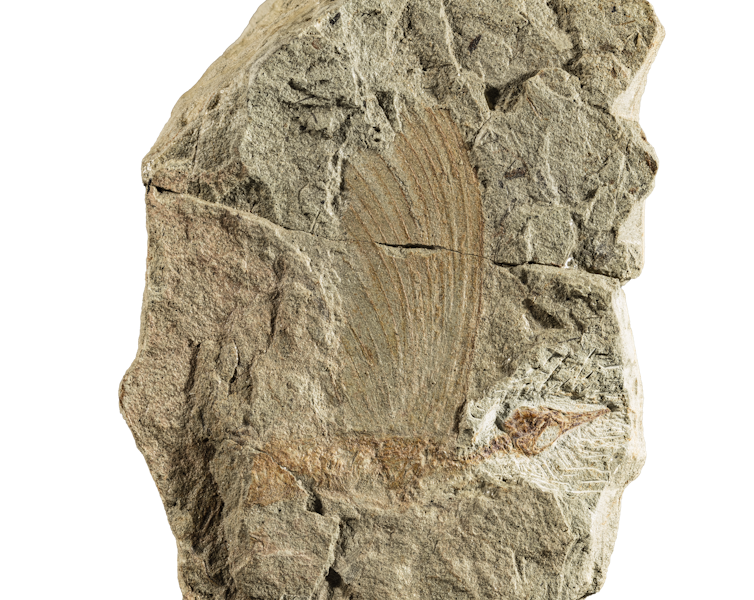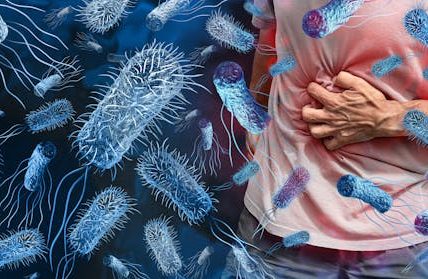Mysterious fossil may rewrite story of skin and feather evolution in reptiles
A delicate, innocuous little fossil reptile known as Mirasaura grauvogeli – “Grauvogel’s wonder reptile” – is forcing a rethink about the evolution of skin and its appendages such as feathers and hair.
These newly discovered fossils, from the Middle Triassic (247 million years old)
Grès à Voltzia site in northeast France, preserve evidence of some of the most astonishing soft-tissue features described to date in ancient reptiles. We are two of the authors of a new paper on these finds, published in Nature.
These fossils show that the tree dwelling Mirasaura had a large and startling crest along its back. The crest is formed by elongated appendages that are neither scales, feathers nor hair.
Until now, complex skin outgrowths such as feathers were thought to have evolved only much later – in birds, dinosaurs and pterosaurs. This probably occurred through a single origin in the common ancestor of these animals. In all other types of reptile, the only skin outgrowths present are scales.
Mirasaura has overthrown this paradigm in sensational fashion. Compared with the size of its body, the long blades of its tall dorsal crest are enormous. Closer inspection reveals this crest comprised individual, overlapping appendages, each with a narrow central ridge and a lobed outline, similar to the shaft and form of feathers.
However, the fossil structures seem to lack the fine branching architecture that characterises most feathers in modern birds. What’s more, Mirasaura is not related to birds, dinosaurs or pterosaurs, but instead belongs to a very ancient group of reptiles, the drepanosauromorphs, that are known only from the Triassic.
The holotype of Mirasaura (State Museum of Natural History Stuttgart, Germany) showing its bird-like skull and crest along its back.
Copyright: Stephan Spiekman, CC BY-NC-ND
The soft tissues of Mirasaura are preserved as a thin brown film, rich in fossil melanosomes – cell structures that contain the pigment melanin during life. Research by our team at University College Cork and others has revealed widespread preservation of fossilised melanosomes in ancient vertebrates. These pigment granules can actually be used to reconstruct melanin-based colour patterns in extinct animals.
Our team’s research has shown that fossil melanosomes can also help reconstruct the soft tissue anatomy of fossil animals, because melanosomes from different body tissues have different shapes and sizes. Our comprehensive examination of the fossilised soft tissues in Mirasaura, coupled with rigorous statistical analysis of the preserved melanosomes, reveals that their geometry is consistent with melanosomes in feathers, but not with melanosomes found in hair and in reptilian skin. This strongly suggests the Mirasaura skin appendages share common developmental features with feathers.
Were the Mirasaura structures feathers, then? The solid, continuous blade of soft tissues either side of the central shaft shows no evidence for branching, which is a defining characteristic of most feathers in birds, dinosaurs and pterosaurs. The water is muddied, however, by the simple unbranched structure of some peculiar feathers in birds – such as the bristles of the turkey’s “beard”. Similar unbranched filaments are known in many dinosaurs and pterosaurs, and are widely considered to represent simple feathers.
Certain dinosaur fossils even have flattened, strip-like feathers that lack branching but possess a central shaft, considered by some experts to be an unusual – extinct – feather type. Whether the resemblance between these fossil structures and the Mirasaura skin outgrowths is superficial or belies closer evolutionary ties remains to be seen.
Fossil specimen of a large crest of Mirasaura, hosted by the State Museum of Natural History Stuttgart.
Copyright: Stephan Spiekman, CC BY-NC-ND
Intriguingly, research on the developing chick embryo shows that feathers can lose their branched structure when certain genes are manipulated. We are currently examining in greater detail the morphology and composition of the Mirasaura structures to help us interpret their anatomy more definitively.
Irrespective of what type of skin outgrowth they represent, our analyses of the anatomy of Mirasaura consistently position it, as well as other drepanosauromorph reptiles, at the base of the reptile tree. This supports data from developmental biology indicating that the genetic basis for the growth of complex skin appendages probably originated in the Carboniferous period, over 300 million years ago.
Mirasaura therefore provides the first direct evidence that complex skin appendages did appear early during reptile evolution, and are not unique to pterosaurs, birds and other dinosaurs.
We owe these new insights to painstaking conservation efforts, which serve as a reminder of the critical importance of natural history collections in conserving our natural heritage.
The earliest discoveries of Mirasaura remains were unearthed in the 1930s by fossil collector Louis Grauvogel. After decades in the Grauvogel family, these specimens were donated to the State Museum of Natural History Stuttgart in 2019, where careful preparation revealed their true significance.
Now, the Mirasaura specimens force us to accept that even before the age of dinosaurs, reptiles were evolving striking anatomical traits normally associated with much younger fossils. This adds an intriguing dimension to future research into the origins of feathers, prompting palaeontologists to consider fossils from more diverse reptile groups – and from time periods before the appearance of dinosaurs and their direct ancestors.
Get your news from actual experts, straight to your inbox. Sign up to our daily newsletter to receive all The Conversation UK’s latest coverage of news and research, from politics and business to the arts and sciences.
Valentina Rossi research is funded by the European Research Council. She is affiliated with University College Cork (UCC)
Maria McNamara receives funding from the European Research Council and Research Ireland.


